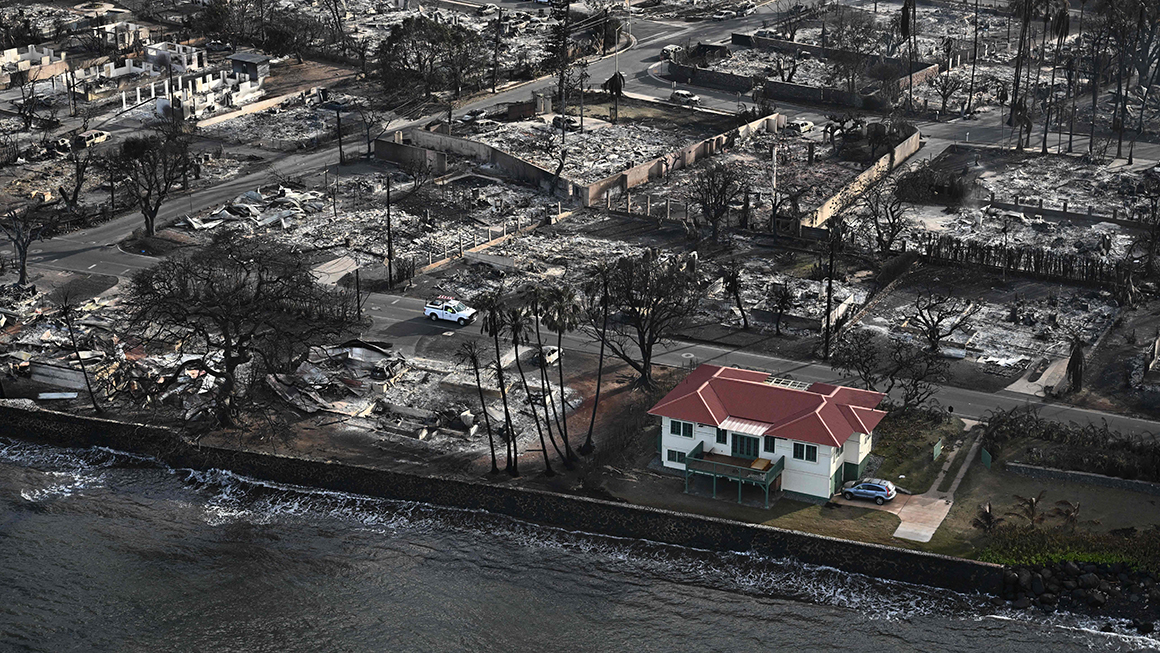Lahaina Fire: A Comprehensive Overview of the Devastation and Recovery
Introduction
The Lahaina Fire was a catastrophic event that forever changed the lives of the residents of Lahaina, a historically rich and culturally significant town on the island of Maui, Hawaii. Known for its serene beaches, charming streets, and vibrant community, Lahaina was a bustling area that attracted thousands of tourists each year. However, in a matter of hours, this peaceful town was engulfed in flames, leaving behind a trail of destruction that the residents could not have anticipated. From the tragic loss of lives and homes to the economic and environmental impacts, the fire left Lahaina in a state of crisis. In this article, we will explore the origins of the fire, how it spread, the immediate aftermath, the toll it took on the environment, and the long-term effects it will have on the region. This guide will also touch on the heartwarming community response, the governmental aid provided, and the lessons learned that will help in preparing for future disasters. Whether you’re looking to understand the scope of the tragedy or find ways to support the victims, this in-depth guide will provide you with all the essential information about the Lahaina Fire.
What is the Lahaina Fire
The Lahaina Fire refers to a series of wildfires that swept through Lahaina in an uncontrollable blaze. Wildfires are not particularly common in Hawaii, unlike places such as California or Australia, which are frequently affected by such events. As a result, the residents of Lahaina were largely unprepared for the sheer magnitude of the disaster that unfolded. The fire consumed homes, businesses, and natural landscapes with alarming speed, leaving a once-thriving town in ashes. What made this fire particularly devastating was its location. Lahaina, with its deep-rooted history, including being the former capital of the Hawaiian Kingdom, is a place that holds immense cultural and historical significance. The loss of such a heritage site in a fire that rapidly spread over a few days was a tragedy not just for the local community but for Hawaii as a whole.
The Origin of the Lahaina Fire
The origins of the Lahaina Fire can be traced back to a combination of both human error and natural conditions. The dry season had set in, and with it came a period of extreme heat and dry vegetation. Trade winds, typical of the Hawaiian Islands, were stronger than usual, acting as a fuel for the growing flames. Investigations are ongoing to determine the exact cause, but some reports suggest that poorly managed brush, coupled with an accidental spark, may have been the tipping point. Several theories have also surfaced regarding possible negligence in fire management practices. Regardless of the root cause, what is clear is that Lahaina was already in a vulnerable state due to the lack of moisture in the region. The fire took advantage of these conditions, quickly turning into an inferno that even the most well-prepared fire departments would have found difficult to contain.
How Fast Did the Lahaina Fire Spread?
One of the most terrifying aspects of the Lahaina Fire was the speed at which it spread. With high winds acting as both a driver and an accelerant, the fire moved rapidly across different parts of Lahaina, leaving residents with little to no time to prepare or evacuate. Wildfires are notorious for their unpredictability, and this fire was no exception. Residents recall hearing emergency alerts on their phones, only to realize that the fire was already dangerously close. In some cases, families were forced to flee their homes within minutes, grabbing whatever essentials they could before the flames reached their doorsteps. The combination of the region’s dry conditions, coupled with the prevailing winds, turned a small spark into a full-blown disaster in a matter of hours. Some reports have noted that the fire moved as fast as 20 miles per hour, a speed that overwhelmed local emergency services, who were struggling to keep up with the blaze’s ferocious pace.
The Immediate Impact on Lahaina
The immediate effects of the Lahaina Fire were beyond devastating. Thousands of residents were left homeless, and entire neighborhoods were reduced to ashes. Front Street, the cultural and economic heart of Lahaina, was among the worst-hit areas. Known for its bustling shops, restaurants, and galleries, this historic street was a major attraction for both tourists and locals alike. The fire wiped out many of these businesses, causing not only personal devastation for the owners but also a significant blow to Lahaina’s economy. In addition to the economic loss, the emotional toll on the community was palpable. Families who had lived in Lahaina for generations saw their homes, heirlooms, and memories go up in flames. Beyond the destruction of property, essential services like power, water, and communication systems were knocked offline, leaving the town in a state of complete disarray. Emergency shelters quickly filled up with displaced families, while neighboring communities rallied to provide food, clothing, and shelter to those in need.
The Human Toll: Lives Lost and Injured
While property loss is devastating, the human toll of the Lahaina Fire is its most tragic aspect. Several lives were lost in the fire, including elderly residents who were unable to evacuate in time and individuals who perished while trying to protect their homes. In the chaos of the fire, many were injured, some severely, as they attempted to escape the flames. Stories of heroic efforts to save lives began to emerge in the aftermath, with neighbors rescuing neighbors and first responders putting their lives on the line to help others. However, for those who lost loved ones, the fire will forever remain a painful memory. The grief that has swept through the community is overwhelming, with funerals and memorial services serving as solemn reminders of the lives cut short. The emotional scars from the loss of life will last long after the town is rebuilt.
Environmental Damage
Beyond the immediate human toll, the environmental damage caused by the Lahaina Fire cannot be overstated. Fires have a way of permanently altering ecosystems, and the lush greenery of Lahaina’s surroundings was not immune to the destruction. The flames ravaged thousands of acres of vegetation, leaving behind a blackened landscape where trees once stood tall. Wildlife habitats were destroyed, displacing countless animals and leading to a collapse in local biodiversity. The fire also impacted the soil, stripping it of its nutrients and increasing the risk of landslides and erosion in the coming rainy season. Additionally, the ash and debris left behind by the fire can have long-lasting effects on local water sources, potentially leading to contamination of rivers and streams. The environmental recovery process will be slow and arduous, requiring extensive efforts in reforestation, soil rehabilitation, and wildlife conservation to bring Lahaina’s natural landscape back to life.
Economic Impact on the Region
The economic impact of the Lahaina Fire extends far beyond the immediate loss of homes and businesses. Lahaina is a major tourist destination in Maui, attracting visitors from around the world. The destruction of hotels, shops, and restaurants means that tourism, the town’s lifeblood, has come to a grinding halt. This has left thousands of people without jobs, further exacerbating the financial strain on the community. Moreover, the loss of critical infrastructure, such as roads, bridges, and public utilities, has made it even harder for the town to recover. The ripple effects of the fire are being felt throughout Maui, as other communities reliant on Lahaina’s economy are also facing economic hardship. The rebuilding process will take years, and for many, the financial burden of starting over from scratch is overwhelming. Insurance claims and federal aid will help, but the road to economic recovery will be long and filled with challenges.
The Response and Efforts to Control the Fire
Firefighters and emergency responders were thrust into action the moment the Lahaina Fire broke out, but they faced an uphill battle from the start. The combination of strong winds, dry conditions, and the sheer size of the fire made it difficult to contain. Firefighting teams from across the island were mobilized, working around the clock to protect as many homes and businesses as they could. Helicopters were deployed to drop water on the fire, but even these efforts were hampered by the high winds. Despite their best efforts, the fire continued to spread, overwhelming the town’s emergency services. In the days that followed, reinforcements arrived from other islands and even the mainland to help bring the fire under control. The bravery and dedication of the firefighters were evident as they put their lives on the line to protect the community. Their efforts were instrumental in preventing further loss of life, but the scale of the fire was simply too great to stop it from causing widespread devastation.
Community Efforts and Support
In the wake of the fire, the Lahaina community has shown incredible resilience. Despite the overwhelming sense of loss, residents have banded together to support one another. Local organizations, churches, and community groups quickly mobilized to provide essential supplies such as food, water, and clothing to those who were displaced. Temporary shelters were set up in schools and community centers, offering a safe place for families who had lost everything. Volunteers from across the island and beyond have come to help with the relief efforts, donating their time, money, and resources to support the victims. Social media has played a crucial role in organizing relief efforts, with people from all over the world contributing to fundraising campaigns. The sense of unity and compassion that has emerged from this tragedy is a testament to the strength of the Lahaina community. While the road to recovery will be long, the support of neighbors and strangers alike has provided hope in the darkest of times.
Government Assistance and Aid
Recognizing the scale of the disaster, both the local and federal governments have stepped in to provide aid to the victims of the Lahaina Fire. Emergency funds have been allocated to help with the immediate needs of those who have been displaced, including temporary housing, food, and medical care. In addition to financial assistance, the government has also deployed disaster relief teams to assist with the cleanup and rebuilding process. FEMA (Federal Emergency Management Agency) has been instrumental in coordinating the response, working alongside state and local officials to ensure that resources are being distributed effectively. However, as with any large-scale disaster, there have been challenges in getting aid to those who need it most. Some residents have expressed frustration with the bureaucratic process, citing delays in receiving assistance. Despite these challenges, the government’s response has been critical in helping the community begin the long process of recovery.
Rebuilding and Moving Forward
Rebuilding Lahaina will be a monumental task that will take years to complete. The scale of the destruction means that entire neighborhoods will need to be rebuilt from the ground up. This will require significant financial investment, not only from insurance claims but also from government aid and private donations. Many residents are facing the difficult decision of whether to rebuild in Lahaina or relocate elsewhere. The emotional toll of returning to a place that has been so profoundly changed is a challenge that many are grappling with. However, there is also a strong desire to preserve the town’s cultural heritage and ensure that future generations can continue to call Lahaina home. The rebuilding process will also need to take into account the lessons learned from the fire, with a focus on making the town more resilient to future disasters. This may include updated building codes, improved fire management practices, and better emergency preparedness plans.
Lessons Learned from the Lahaina Fire
The Lahaina Fire has underscored the importance of being prepared for natural disasters, even in areas where they are not common. The rapid spread of the fire caught many residents off guard, highlighting the need for better early warning systems and evacuation plans. It has also raised important questions about fire management practices and the role that human activity plays in exacerbating wildfire risks. Moving forward, there will be a greater emphasis on preventative measures, such as controlled burns and better management of dry brush and vegetation. The fire has also sparked a broader conversation about climate change and its impact on the frequency and severity of wildfires. As temperatures continue to rise and droughts become more common, communities like Lahaina will need to adapt to a new reality where the threat of wildfires is a constant concern. The lessons learned from this tragedy will help inform future disaster preparedness efforts, not just in Hawaii but around the world.
Global Awareness and Support
The Lahaina Fire has garnered international attention, with people from all over the world offering their support to the victims. The outpouring of donations, both large and small, has been overwhelming, with fundraising campaigns raising millions of dollars to help with the recovery efforts. Celebrities, businesses, and organizations have all contributed to the cause, using their platforms to raise awareness about the devastation in Lahaina. The global response has been a powerful reminder that in times of crisis, the world can come together to offer support and solidarity. This international attention has also helped shine a light on the broader issue of wildfires and the need for greater global cooperation in addressing climate change. As communities around the world continue to face the growing threat of wildfires, the lessons learned from Lahaina will serve as a crucial case study in disaster response and recovery.
Conclusion
The Lahaina Fire was a tragedy of unprecedented proportions, leaving behind a trail of destruction that will take years to fully recover from. While the immediate aftermath has been heartbreaking, the resilience of the Lahaina community has been nothing short of inspiring. As residents begin the long process of rebuilding their lives and their town, they do so with the support of a global community that has rallied behind them. The fire has left a lasting impact on Lahaina, not just in terms of physical destruction but also in the emotional and psychological scars it has inflicted. However, the strength of the community, coupled with the lessons learned from this disaster, will ensure that Lahaina rises from the ashes stronger and more resilient than ever before.
FAQs
What caused the Lahaina Fire?
- The exact cause is still under investigation, but it’s believed that a combination of human error and natural conditions, such as dry vegetation and strong winds, contributed to the rapid spread of the fire.
How fast did the Lahaina Fire spread?
- The fire spread at an alarming rate, with some reports suggesting that it moved as fast as 20 miles per hour due to the high winds and dry conditions.
What was the impact on the environment?
- The fire caused significant environmental damage, destroying thousands of acres of vegetation, displacing wildlife, and increasing the risk of landslides and erosion in the affected areas.
How is the community recovering?
- The community has shown incredible resilience, with local organizations, volunteers, and government aid playing a crucial role in providing relief and support to those affected by the fire.
What lessons were learned from the Lahaina Fire?
- The fire underscored the importance of disaster preparedness, better fire management practices, and the need to address the growing threat of wildfires due to climate change.


